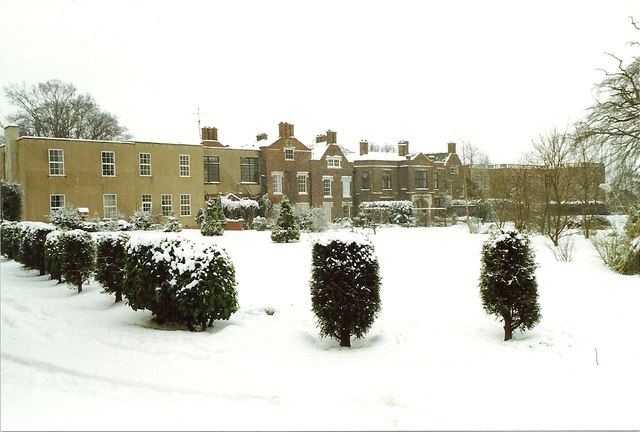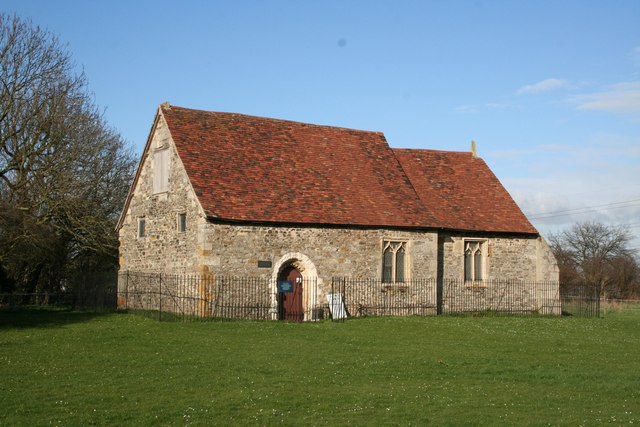Elston, Nottinghamshire on:
[Wikipedia]
[Google]
[Amazon]
Elston is a
 Elston Hall was "the home of the
Elston Hall was "the home of the
 Once a
Once a
The Elston Heritage ProjectBritish History Online: Parishes – Elston
{{Nottinghamshire, state=expanded Villages in Nottinghamshire Newark and Sherwood Civil parishes in Nottinghamshire
village
A village is a clustered human settlement or community, larger than a hamlet but smaller than a town (although the word is often used to describe both hamlets and smaller towns), with a population typically ranging from a few hundred to ...
and civil parish
In England, a civil parish is a type of administrative parish used for local government. It is a territorial designation which is the lowest tier of local government below districts and counties, or their combined form, the unitary authority ...
in the Newark and Sherwood district, in Nottinghamshire
Nottinghamshire (; abbreviated Notts.) is a landlocked county in the East Midlands region of England, bordering South Yorkshire to the north-west, Lincolnshire to the east, Leicestershire to the south, and Derbyshire to the west. The traditi ...
, England, to the south-west of Newark
Newark most commonly refers to:
* Newark, New Jersey, city in the United States
* Newark Liberty International Airport, New Jersey; a major air hub in the New York metropolitan area
Newark may also refer to:
Places Canada
* Niagara-on-the ...
, from the A46 Fosse Way
The Fosse Way was a Roman road built in Britain during the first and second centuries AD that linked Isca Dumnoniorum (Exeter) in the southwest and Lindum Colonia (Lincoln) to the northeast, via Lindinis (Ilchester), Aquae Sulis ( Bath), Corini ...
. The population of the civil parish taken at the 2011 census was 631, increasing to 697 at the 2021 census. It lies between the rivers Trent
Trent may refer to:
Places Italy
* Trento in northern Italy, site of the Council of Trent United Kingdom
* Trent, Dorset, England, United Kingdom Germany
* Trent, Germany, a municipality on the island of Rügen United States
* Trent, California, ...
and Devon
Devon ( , historically known as Devonshire , ) is a ceremonial and non-metropolitan county in South West England. The most populous settlement in Devon is the city of Plymouth, followed by Devon's county town, the city of Exeter. Devon is ...
, with the village "set amongst trees and farmland less than a mile from the A46.... Newark is five miles to the north, with... Lincoln and Nottingham
Nottingham ( , East Midlands English, locally ) is a city status in the United Kingdom, city and Unitary authorities of England, unitary authority area in Nottinghamshire, East Midlands, England. It is located north-west of London, south-east ...
some 18 miles north and south-west respectively."Elston Parish CouncilDarwins
According to Cornelius Brown's 1896 ''History of Nottinghamshire'', the village lies"very snugly and prettily ensconced in the midst of a pleasing landscape of North England. Nearly opposite each other are the Hall and vicarage, both occupying delightful situations, and built in elegant and stately style.Elston "currently has about 650 residents in 280 households. A number of new homes have been built within the last twenty years on once open spaces and there continues to be infill development on some of the large gardens."All Saints' Church, Elston All Saints' Church, Elston is a Grade II* listed parish church in the Church of England in Elston, Nottinghamshire, England. History The church dates from the 13th century. It was restored in 1837. The chancel was restored and the vestry rebuilt ...has been handsomely restored, and is singularly rich in its memorials of the Darwins. This eminent family appear to have come to Elston fromLincolnshire Lincolnshire (abbreviated Lincs.) is a county in the East Midlands of England, with a long coastline on the North Sea to the east. It borders Norfolk to the south-east, Cambridgeshire to the south, Rutland to the south-west, Leicestershire ...towards the close of the seventeenth century, the manor being brought into the possession ofWilliam Darwin William is a male given name of Germanic origin.Hanks, Hardcastle and Hodges, ''Oxford Dictionary of First Names'', Oxford University Press, 2nd edition, , p. 276. It became very popular in the English language after the Norman conquest of Engl ...through his marriage with the heiress of Robert Waring of Wilford. William had two sons, and Elston was left to Robert, the younger, in whom the taste for scientific research began to develop."
History
Elston was "founded by the Angles in the 5th century. Its square shape is typicallyAnglo Saxon
The Anglo-Saxons were a cultural group who inhabited England in the Early Middle Ages. They traced their origins to settlers who came to Britain from mainland Europe in the 5th century. However, the ethnogenesis of the Anglo-Saxons happened wit ...
. The name derives from a leader named Elva and appears in the Domesday book
Domesday Book () – the Middle English spelling of "Doomsday Book" – is a manuscript record of the "Great Survey" of much of England and parts of Wales completed in 1086 by order of King William I, known as William the Conqueror. The manusc ...
as Elvastun. Historic old buildings in and adjacent to the parish include Elston Hall, All Saints Church, the Old Chapel of Ease on the site of a mediaeval
In the history of Europe, the Middle Ages or medieval period lasted approximately from the late 5th to the late 15th centuries, similar to the post-classical period of global history. It began with the fall of the Western Roman Empire a ...
leper hospital, the Methodist
Methodism, also called the Methodist movement, is a group of historically related denominations of Protestant Christianity whose origins, doctrine and practice derive from the life and teachings of John Wesley. George Whitefield and John's b ...
Chapel, and Elston Towers, the Victorian
Victorian or Victorians may refer to:
19th century
* Victorian era, British history during Queen Victoria's 19th-century reign
** Victorian architecture
** Victorian house
** Victorian decorative arts
** Victorian fashion
** Victorian literature ...
mansion of preacher Robert Middleton, now refurbished as a day spa and renamed Eden Hall."
Elston Hall
 Elston Hall was "the home of the
Elston Hall was "the home of the Darwin family
Darwin may refer to:
Common meanings
* Charles Darwin (1809–1882), English naturalist and writer, best known as the originator of the theory of biological evolution by natural selection
* Darwin, Northern Territory, a territorial capital city i ...
from 1680 until just after the Second World War
World War II or the Second World War, often abbreviated as WWII or WW2, was a world war that lasted from 1939 to 1945. It involved the vast majority of the world's countries—including all of the great powers—forming two opposin ...
, when the estate was sold. Its premier resident was the savant Erasmus Darwin
Erasmus Robert Darwin (12 December 173118 April 1802) was an English physician. One of the key thinkers of the Midlands Enlightenment, he was also a natural philosopher, physiologist, slave-trade abolitionist, inventor, and poet.
His poems ...
, grandfather of Charles Darwin
Charles Robert Darwin ( ; 12 February 1809 – 19 April 1882) was an English naturalist, geologist, and biologist, widely known for his contributions to evolutionary biology. His proposition that all species of life have descended fr ...
. Erasmus founded the Lunar Society, which included Josiah Wedgwood, Matthew Boulton
Matthew Boulton (; 3 September 172817 August 1809) was an English manufacturer and business partner of Scottish engineer James Watt. In the final quarter of the 18th century, the partnership installed hundreds of Boulton & Watt steam engine ...
, James Watt
James Watt (; 30 January 1736 (19 January 1736 OS) – 25 August 1819) was a Scottish inventor, mechanical engineer, and chemist who improved on Thomas Newcomen's 1712 Newcomen steam engine with his Watt steam engine in 1776, which was fun ...
, Joseph Priestley
Joseph Priestley (; 24 March 1733 – 6 February 1804) was an English chemist, natural philosopher, separatist theologian, grammarian, multi-subject educator, and liberal political theorist. He published over 150 works, and conducted exp ...
and Benjamin Franklin
Benjamin Franklin ( April 17, 1790) was an American polymath who was active as a writer, scientist, inventor, statesman, diplomat, printer, publisher, and political philosopher. Encyclopædia Britannica, Wood, 2021 Among the leading inte ...
."
The present house was begun in 1756, then extended in 1837 and again later that century and in the 1950s. Originally H-shaped, it is now a linear sequence of two-storey ranges, the earliest being the central range built in blue lias stone. Grade II listed
In the United Kingdom, a listed building or listed structure is one that has been placed on one of the four statutory lists maintained by Historic England in England, Historic Environment Scotland in Scotland, in Wales, and the Northern Irel ...
in 1952, the buildings are now divided into ten residences.
Elston Chapel
 Once a
Once a parish church
A parish church (or parochial church) in Christianity is the church which acts as the religious centre of a parish. In many parts of the world, especially in rural areas, the parish church may play a significant role in community activities, ...
, this was declared redundant in 1976, and under the care of the Churches Conservation Trust. It is a Grade I listed building containing a fine Norman
Norman or Normans may refer to:
Ethnic and cultural identity
* The Normans, a people partly descended from Norse Vikings who settled in the territory of Normandy in France in the 10th and 11th centuries
** People or things connected with the Norm ...
south doorway with zigzag decoration.
Inside are layers of wall paintings. It is thought it may have been the chapel of a medieval leper
Leprosy, also known as Hansen's disease (HD), is a long-term infection by the bacteria ''Mycobacterium leprae'' or ''Mycobacterium lepromatosis''. Infection can lead to damage of the nerves, respiratory tract, skin, and eyes. This nerve damage ...
hospital dedicated to St Leonard
Leonard of Noblac (also Leonard of Limoges or Leonard of Noblet; also known as Lienard, Linhart, Leonhard, Léonard, Leonardo, Annard; died 559), is a Frankish saint closely associated with the town and abbey of Saint-Léonard-de-Noblat, in Hau ...
.
Elston Mill
Maps show windmills on the north side of Elston Lane () and south side of Mill Lane (). The latter was a tower mill built about 1844, the tower being bottle-shaped, with an increase in batter at the 3rd floor. Some renovation was done by Gash in 1919 and a new sail fitted by Wakes and Lamb of Newark for £74 in 1920. However, it was demolished in about 1940.See also
* Listed buildings in ElstonReferences
External links
The Elston Heritage Project
{{Nottinghamshire, state=expanded Villages in Nottinghamshire Newark and Sherwood Civil parishes in Nottinghamshire